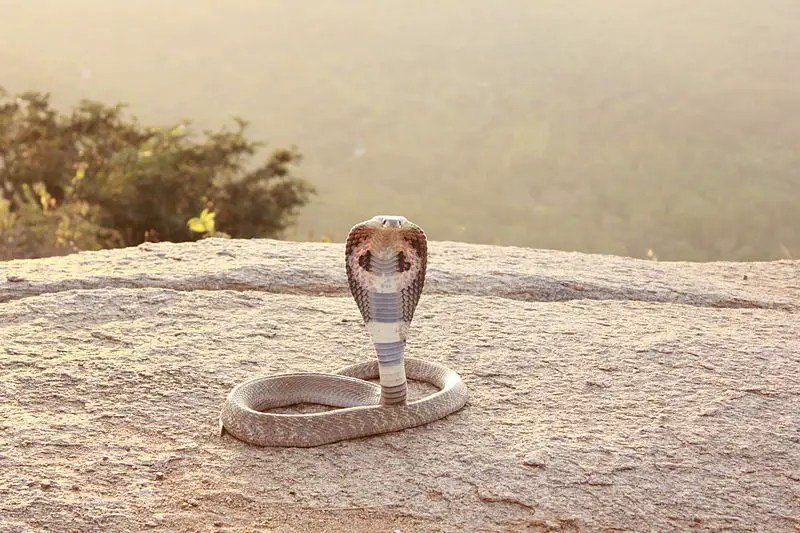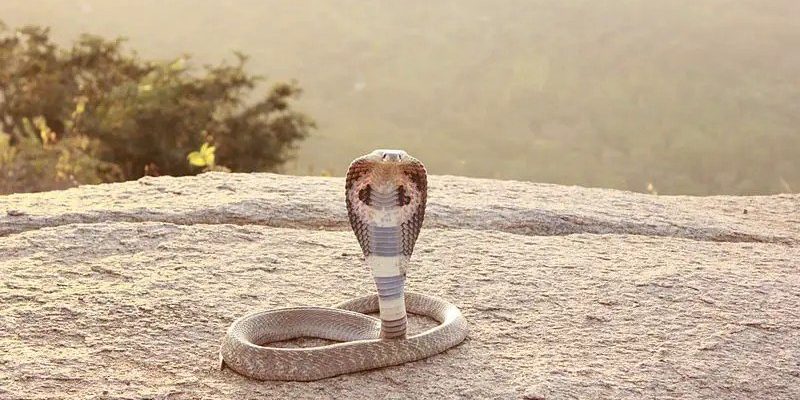
As a member of the Elapidae family, the Indian cobra (Naja naja) has gained a reputation that warrants a closer look. Understanding its behaviors, habitats, and significance can make you appreciate this snake even more. So, let’s dive into some of the most captivating facts about this remarkable reptile.
1. The Iconic Hood
One of the most recognizable features of the Indian cobra is its hood. When threatened, it expands this skin flap around its neck to appear larger and more intimidating. Imagine a cat puffing up its fur to scare off a dog. The cobra’s hood serves a similar purpose—intimidation. This display isn’t just for show; it’s a survival tactic that’s been honed over millions of years.
The hood is marked with beautiful, eye-catching patterns. These can vary from region to region, making each cobra unique. If you ever find yourself trying to identify one, look closely at the patterns; they’re like fingerprints for snakes.
2. Venomous, but Fascinating
You might be wondering, how dangerous is the Indian cobra? Here’s the thing: while it’s true that its venom can be deadly, this snake is not inherently aggressive. It tends to avoid confrontation when possible. Its venom works by attacking the nervous system, causing paralysis and, in some cases, death if left untreated.
However, many people who interact with cobras in India learn to handle them with care. Training and respect often lead to safer encounters. So, while they deserve caution, they’re also fascinating creatures that play a vital role in their ecosystem by controlling rodent populations.
3. Cultural Significance
The Indian cobra holds a special place in Indian culture and mythology. In Hindu tradition, this snake is often associated with Lord Shiva, who is depicted wearing a cobra around his neck. This connection elevates the cobra to something of a divine status.
Moreover, cobras are a symbol of protection. In some parts of India, you’ll even find people performing snake charming, where they mesmerize these reptiles through music. It’s an art form filled with history, and it showcases the deep bond that some cultures have with these reptiles.
4. Unique Mating Rituals
When it comes to romance, Indian cobras have their own unique way of doing things. During mating season, which typically occurs in the monsoon months, males engage in combat dances to attract females. These displays can look pretty dramatic, as two males rise up and intertwine, trying to assert dominance.
After a successful mating, the female will lay about 20 to 40 eggs. Here, she exhibits a fascinating behavior—she will often guard the eggs until they hatch. Mother cobras are protective and attentive, which is somewhat rare in the snake world. It’s a surprising twist, showing that these creatures can display nurturing behaviors.
5. Habitat and Range
The Indian cobra can be found in a variety of habitats across the Indian subcontinent, from forests and grasslands to urban areas. You might think, “How can a snake thrive among humans?” Surprisingly, they often adapt well, hunting rodents and other small animals that thrive in urban environments.
They prefer warm climates, which is why you’ll primarily see them in areas that remain consistently warm. However, during the cooler months, they may retreat to burrows or other secluded spots to stay warm—like curling up under a blanket on a chilly day.
6. Lifespan and Longevity
You might be surprised to learn that the Indian cobra can live a relatively long life for a snake. In captivity, they can live up to 20 years! In the wild, their lifespan is shorter due to predators and environmental challenges, but they typically live around 10-15 years.
This longevity gives them plenty of time to reproduce and contribute to their population. It’s a reminder of how resilient they are, adapting to various environments and circumstances throughout their lives.
7. The Importance of Conservation
Although the Indian cobra is not currently endangered, it faces threats from habitat loss and poaching. As cities expand, its natural habitats shrink, leading to conflicts with humans. This is where education plays a crucial role. By learning about these snakes and their importance in the ecosystem, people can make informed choices to protect them.
Conservation efforts are essential to ensure that future generations can enjoy and learn about the Indian cobra. Supporting local wildlife organizations or participating in educational programs can make a difference in preserving these fascinating creatures.
8. Misunderstood Creatures
Let’s clear the air on a common misconception: not all cobras are out to get you. Many people fear snakes, but much of that fear comes from misunderstandings. Indian cobras, like many snakes, are more scared of humans than we are of them. They play an essential role in maintaining the balance of their ecosystems, controlling pest populations.
So, what do you do if you encounter one? The best course of action is to keep your distance and allow it to move away. Understanding their behavior can help minimize conflicts and promote coexistence.
9. The Role of Indian Cobras in Research
Scientists often study the venom of Indian cobras for medical research. The unique properties of their venom can lead to breakthroughs in medicine, like pain relief and treatments for various diseases. It’s a fascinating intersection of nature and science, showing that these creatures can significantly impact human health.
Studying cobras not only opens the door to new medical discoveries but also strengthens our understanding of biodiversity. It’s a reminder that every creature, even the ones that intimidate us, contributes to the bigger picture of our world.
10. Captivating Display Behaviors
If you’ve ever seen a cobra in action, you know it can be an unforgettable experience. Indian cobras display a wide range of behaviors, from hissing and hooding to striking. These behaviors aren’t just for defense; they also play a role in communication with other snakes.
During mating season, the elaborate courtship dances between males can be mesmerizing. Observing these interactions reveals a complex social structure that exists among these reptiles. It’s a peek into their world that many people don’t get to see, showcasing the intricacies of their behaviors.
In conclusion, the Indian cobra is more than just a symbol of danger; it represents a complex interplay of culture, ecology, and science. By appreciating its role in the environment and understanding its behaviors, we can develop a deeper respect for this fascinating creature. The next time you think of the Indian cobra, remember its unique traits and the stories behind its existence.

